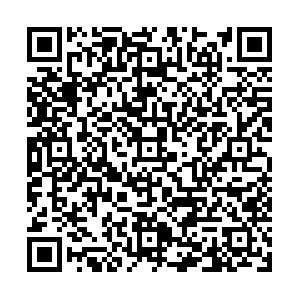Effect of peer-support education combined with general practice team-management mode on the level of knowledge, attitude, and practice of type-2 diabetes patients in the community
-
摘要:
目的 探讨同伴支持教育联合全科团队管理模式对社区2型糖尿病患者知信行水平的影响,评估该模式的应用效果。 方法 于2018年7—10月以南京市江宁区汤山、禄口、东山社区卫生服务中心的2型糖尿病患者196例作为研究对象,采用随机数字表法将患者分为干预组(100例)和对照组(96例)。干预组采用同伴支持教育联合全科团队管理模式,对照组采用常规社区管理模式。模式实施1年后,比较2组患者知识、信念和态度、行为水平的差异。 结果 最终完成随访的患者,干预组95例,对照组93例。干预后,干预组患者糖尿病相关知识得分显著高于对照组(P < 0.05)。2组患者自我效能的各项得分较基线均有所上升,其中2组血糖监测、病情控制及总效能得分比较差异有统计学意义(均P < 0.05)。干预后干预组血糖管理、足部护理、遵医用药得分分别为(5.2±1.4)分、(4.5±1.9)分、(6.5±2.1)分,对照组分别为(4.2±1.8)分、(3.8±2.2)分、(5.8±1.9)分,2组比较差异有统计学意义(均P < 0.05),2组患者饮食管理、运动管理得分比较差异无统计学意义(均P>0.05)。 结论 同伴支持教育联合全科团队管理模式可提高社区2型糖尿病患者相关知识水平,帮助其掌握正确的自我管理行为。 Abstract:Objective To explore the effect of peer-support education combined with general practice team-management mode on the level of knowledge, attitude, and practice (KAP) of T2DM patients in community, and evaluate the effect of this model. Methods Total 196 patients with T2DM in Tangshan, Lukou and Dongshan community health-service centres in Jiangning District of Nanjing were selected as the research objects from July 2018 to October 2018, and divide into intervention group (100 cases) and control group (96 cases) used a random-number table method. The intervention group adopted peer-support education combined with general practice team-management mode, whereas the control group adopted conventional community-management mode. One year after the model was implemented, the differences in KAP levels between the two groups were compared. Results The patients who finally completed the follow-up included 95 cases in the intervention group and 93 cases in the control group. After one year of intervention, the diabetes-related knowledge scores of patients in the intervention group were significantly higher than those in the control group (P < 0.05). The scores of self-efficacy in both groups increased compared with the baseline. Amongst them, the average scores of blood glucose monitoring, disease control, and total efficacy were statistically significant (all P < 0.05). The score of glucose monitoring, foot care, and pharmaceutical administration for self-management ability in the intervention group were 5.2±1.4, 4.5±1.9, 6.5±2.1, whereas the values of these indicators in the control group were 4.2±1.8, 3.8±2.2, 5.8±1.9, the differences between two groups were statistically significant (all P < 0.05). There were no significant differences in scores of diet management and exercise management between two groups (all P>0.05). Conclusion Peer-support education combined with general practice team-management mode can improve the knowledge level of patients with T2DM, and help them master the correct self-management behaviour. -
表 1 2组2型糖尿病患者基线资料比较
项目 类别 对照组(93例) 干预组(95例) 统计量 P值 年龄(x±s, 岁) 63.7±7.6 64.3±7.1 -0.559a 0.576 性别[例(%)] 男性 38(40.9) 42(44.2) 0.216b 0.661 女性 55(59.1) 53(55.8) 教育程度[例(%)] 小学及以下 21(22.6) 24(25.3) -0.731c 0.465 初中 30(32.3) 32(33.7) 高中/中专 24(25.8) 25(26.3) 大专及以上 18(19.3) 14(14.7) 职业[例(%)] 在职 35(37.6) 42(44.2) 0.840b 0.377 离退休 58(62.4) 53(55.8) 年收入[例(%)] < 1.8万元 14(15.1) 18(18.9) -1.107c 0.268 1.8~2.4万元 46(49.5) 50(52.6) >2.4万元 33(35.4) 27(28.5) 病程[例(%)] < 5年 19(20.4) 14(14.7) -0.670c 0.503 5~10年 46(49.5) 51(53.7) >10年 28(30.1) 30(31.6) 糖尿病并发症[例(%)] 无 53(57.0) 57(60.0) 1.088b 0.993 脑血管病变 10(10.8) 8(8.4) 心血管病变 14(15.0) 12(12.6) 糖尿病周围神经病变 4(4.3) 5(5.3) 糖尿病周围血管病变 3(3.2) 2(2.1) 糖尿病视网膜病变 6(6.4) 7(7.4) 糖尿病肾病 2(2.2) 3(3.2) 糖尿病足 1(1.1) 1(1.0) 慢性合并症[例(%)] 无 56(60.2) 52(54.7) 0.577b 0.448 有 37(39.8) 43(45.3) 吸烟史[例(%)] 无 34(36.6) 39(41.1) 0.399b 0.527 有 59(63.4) 56(58.9) 饮酒史[例(%)] 无 38(40.9) 34(35.8) 0.511b 0.475 有 55(59.1) 61(64.2) 空腹血糖(x±s, mmol/L) 7.4±2.3 7.8±2.6 -1.116a 0.266 注:a为t值,b为χ2值,c为Z值。 表 2 2组2型糖尿病患者糖尿病相关知识知晓水平比较(x±s, 分)
组别 例数 干预前 干预后 对照组 93 56.8±14.6 70.6±16.8a 干预组 95 59.4±15.2 78.2±18.5a t值 -1.196 -2.947 P值 0.233 0.004 注:与干预前比较,aP < 0.05。 表 3 2组2型糖尿病患者各维度自我效能水平比较(x±s, 分)
组别 例数 干预前 干预后 饮食控制 运动锻炼 血糖监测 病情控制 总效能平均得分 饮食控制 运动锻炼 血糖监测 病情控制 总效能平均得分 对照组 93 6.8±2.3 7.0±2.6 6.6±1.8 6.5±2.0 6.7±2.2 7.3±2.4 7.2±2.0 7.0±2.5 7.1±2.3 7.1±2.2 干预组 95 6.6±2.6 6.8±2.2 6.7±2.1 6.4±2.7 6.5±2.2 7.4±2.1a 7.3±2.3 7.8±2.2a 7.8±2.0a 7.7±1.9a t值 0.558 0.570 -0.350 0.288 0.623 -0.304 -0.318 -2.331 -2.228 -2.003 P值 0.577 0.569 0.727 0.774 0.534 0.761 0.751 0.021 0.027 0.047 注:与干预前比较,aP < 0.05。 表 4 2组2型糖尿病患者自我管理行为比较(x±s)
组别 例数 干预前 干预后 饮食管理(分) 运动管理(分) 血糖管理(分) 足部护理(分) 遵医用药(分) 每日吸烟量(支) 饮食管理(分) 运动管理(分) 血糖管理(分) 足部护理(分) 遵医用药(分) 每日吸烟量(支) 对照组 93 4.7±1.3 4.1±1.6 3.0±2.1 2.8±1.4 5.2±2.0 12.3±2.5 5.6±2.2a 5.0±2.0a 4.2±1.8a 3.8±2.2a 5.8±1.9a 9.2±2.0a 干预组 95 4.8±1.9 4.3±1.8 3.2±1.7 3.1±1.5 5.4±2.3 11.9±2.2 6.1±2.0a 5.6±2.3a 5.2±1.4a 4.5±1.9a 6.5±2.1a 8.9±2.5a t值 -0.420 -0.805 -0.718 -1.417 -0.636 1.165 -1.631 -1.907 -4.257 -2.336 -2.395 0.907 P值 0.675 0.422 0.473 0.158 0.526 0.245 0.105 0.058 < 0.001 0.021 0.018 0.365 注:与干预前比较,aP < 0.05。 表 5 2组2型糖尿病患者糖化血红蛋白以及低血糖发生率比较
组别 例数 HbA1c(x±s, %) 低血糖[例(%)] 干预前 干预后 干预前 干预后 对照组 93 8.24±0.62 7.26±0.53b 20(21.51) 15(16.13) 干预组 95 8.37±0.54 6.46±0.61b 19(20.00) 6(6.32)b 统计量 -1.534a 9.591a 0.065c 4.560c P值 0.127 < 0.001 0.799 0.033 注:a为t值,c为χ2值;与干预前比较,bP < 0.05。 -
[1] 杨文英. 中国糖尿病的流行特点及变化趋势[J]. 中国科学: 生命科学, 2018, 48(8): 812-819. https://www.cnki.com.cn/Article/CJFDTOTAL-JCXK201808003.htm [2] 王静, 刘平. 同伴支持活动模式对社区糖尿病患者效果观察[J]. 中西医结合心血管病电子杂志, 2019, 7(5): 198-199. https://www.cnki.com.cn/Article/CJFDTOTAL-ZXJH201905147.htm [3] 中华医学会糖尿病学分会. 中国2型糖尿病防治指南(2017年版)[J]. 中国实用内科杂志, 2018, 38(4): 292-344. https://www.cnki.com.cn/Article/CJFDTOTAL-SYNK201804009.htm [4] 陈利, 黄美凌, 李映桃, 等. 同伴支持模式在健康教育中的应用现状与展望[J]. 全科护理, 2019, 17(10): 1178-1181. doi: 10.12104/j.issn.1674-4748.2019.10.009 [5] 刘宏杰, 石红梅, 邢丽丽. 同伴支持干预对2型糖尿病患者知识知晓及自我管理的远期影响研究[J]. 中国全科医学, 2019, 22(34): 4240-4245. doi: 10.12114/j.issn.1007-9572.2019.00.695 [6] GATLIN T K, SERAFICA R, JOHNSON M. Systematic review of peer education intervention programmes among individuals with type 2 diabetes[J]. J Clin Nurs, 2017, 26(23-24): 4212-4222. doi: 10.1111/jocn.13991 [7] 叶任高, 陆再英. 内科学[M]. 6版. 北京: 人民卫生出版社, 2004: 787-820. [8] 中华人民共和国卫生部. 国家基本公共卫生服务规范(2011年版)[EB/OL]. (2011-05-24)[2021-01-26]. http://www.nhfpc.gov.cn/jws/s3577/201105/51780.shtml. [9] 夏燕美, 姬国华. 早发冠心病的临床危险因素分析与护理对策[J]. 中华全科医学, 2017, 15(1): 173-175. https://www.cnki.com.cn/Article/CJFDTOTAL-SYQY201701053.htm [10] 周晓丽, 刘曼玲, 焦艳会. 多种慢性病管理模式在社区老年高血压患者中的综合应用与评价[J]. 中华全科医学, 2020, 18(3): 449-453. https://www.cnki.com.cn/Article/CJFDTOTAL-SYQY202003030.htm [11] 李诗薇, 于卫华, 陈德宇, 等. 冠心病危险指数对老年2型糖尿病患者颈动脉内膜增厚的风险评估[J]. 中华全科医学, 2021, 19(4): 530-533. https://www.cnki.com.cn/Article/CJFDTOTAL-SYQY202104002.htm [12] 张耀龙, 宋乃光, 孙晶晶. 脑卒中并发肺炎与患者营养不良的相关性[J]. 中国老年学杂志, 2021, 41(5): 936-938. https://www.cnki.com.cn/Article/CJFDTOTAL-ZLXZ202105014.htm [13] DA WSON A Z, WALKER R J, EGEDE L E. Differential relationships between diabetes knowledge scales and diabetes outcomes[J]. Diabetes Educator, 2017, 43(4): 360-366. doi: 10.1177/0145721717713316 [14] LORIG K, STEWART A, RITTER P, et al. Outcome measures for health education and other health care interventions[M]. Thousand Osks, CA: Sage, 1996: 41-44. [15] TOOBERT D J, HAMPSON S E, GLASGOW R E. The summary of diabetes self-care activities measure: Results from 7 studies and a revised scale[J]. Diabetes Care, 2000, 23(7): 943-950. doi: 10.2337/diacare.23.7.943 [16] 李明月, 曾燕, 唐艳华, 等. 同伴支持教育在社区2型糖尿病患者中的作用研究[J]. 重庆医学, 2017, 46(29): 4139-4141. doi: 10.3969/j.issn.1671-8348.2017.29.032 [17] HERMANNS N, EHRMANN D, FINKE-GROENE K, et al. Trends in diabetes self-management education: Where are we coming from and where are we going?A narrative review[J]. Diabetic Med, 2020, 37(3): 436-447. doi: 10.1111/dme.14256 [18] 刘月星, 蔡淳, 贾伟平. 同伴支持在糖尿病防治管理中应用的研究进展[J]. 中华糖尿病杂志, 2019, 11(9): 633-636. doi: 10.3760/cma.j.issn.1674-5809.2019.09.013 [19] 刘颖, 蒋国平, 任菁菁. 我国全科医生培养现状与发展策略[J]. 中国工程科学, 2019, 21(2): 74-78. https://www.cnki.com.cn/Article/CJFDTOTAL-GCKX201902013.htm -





 下载:
下载:


